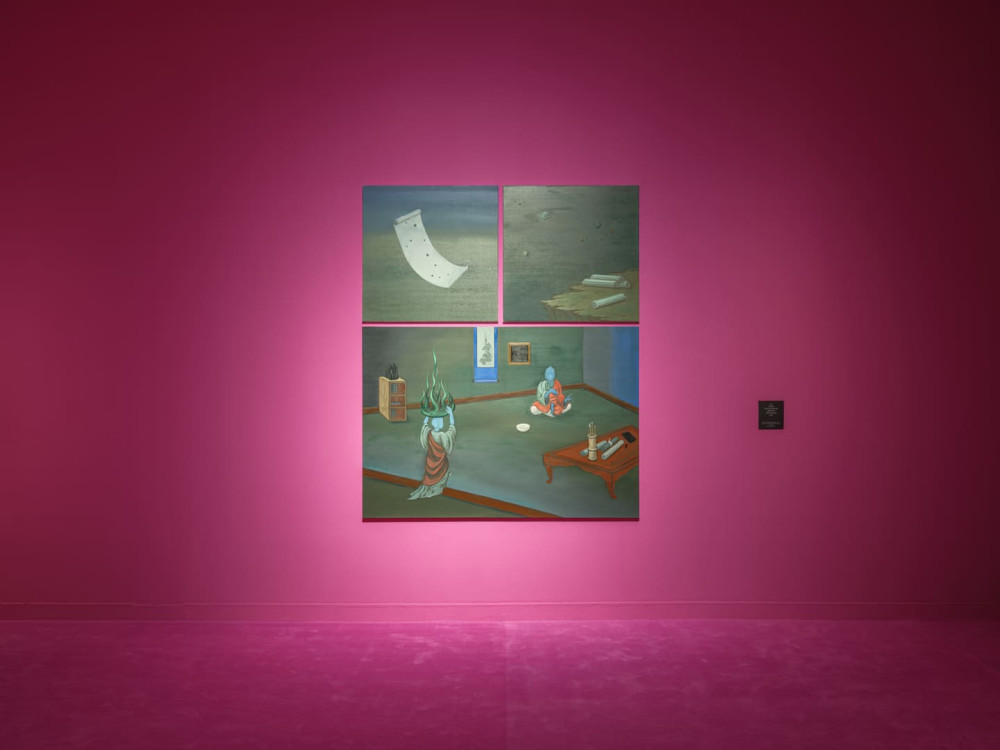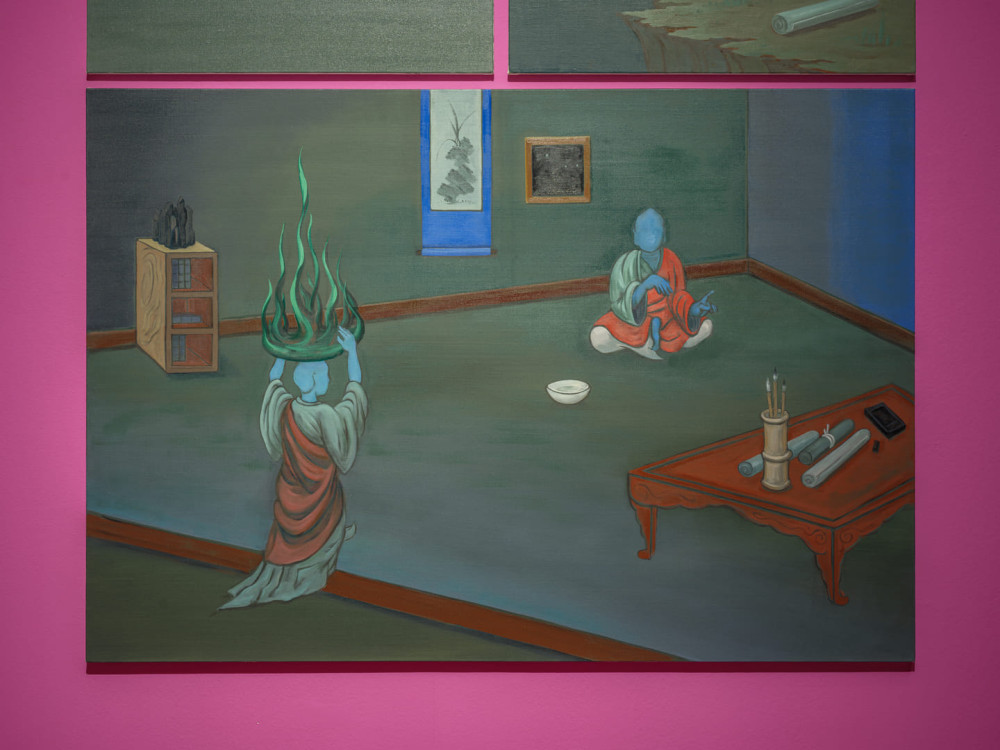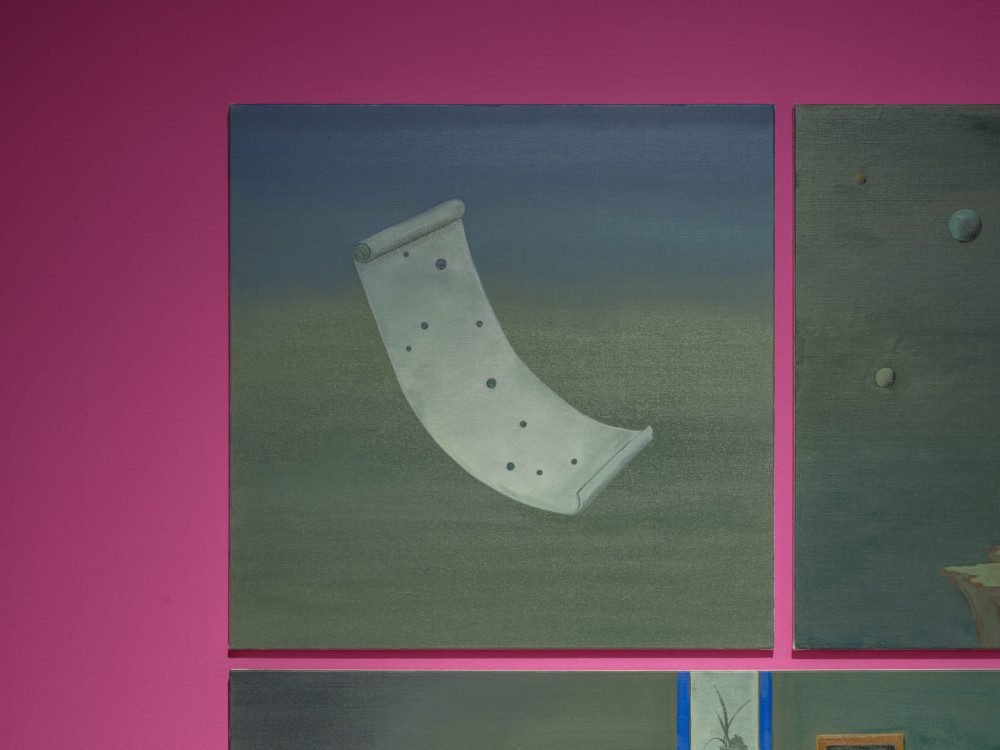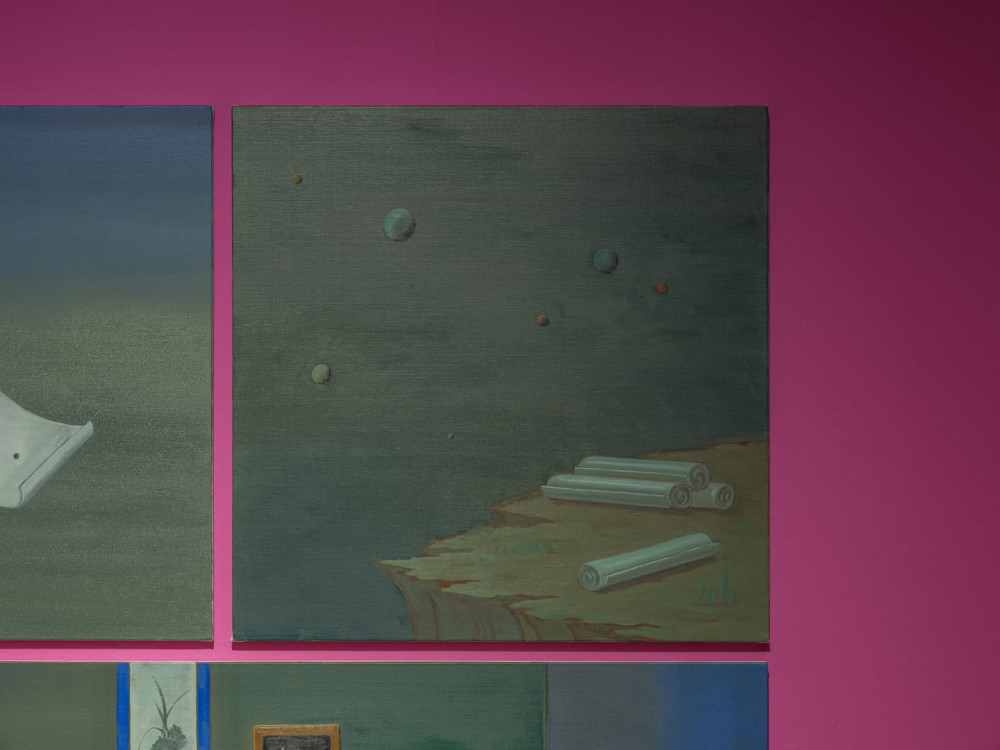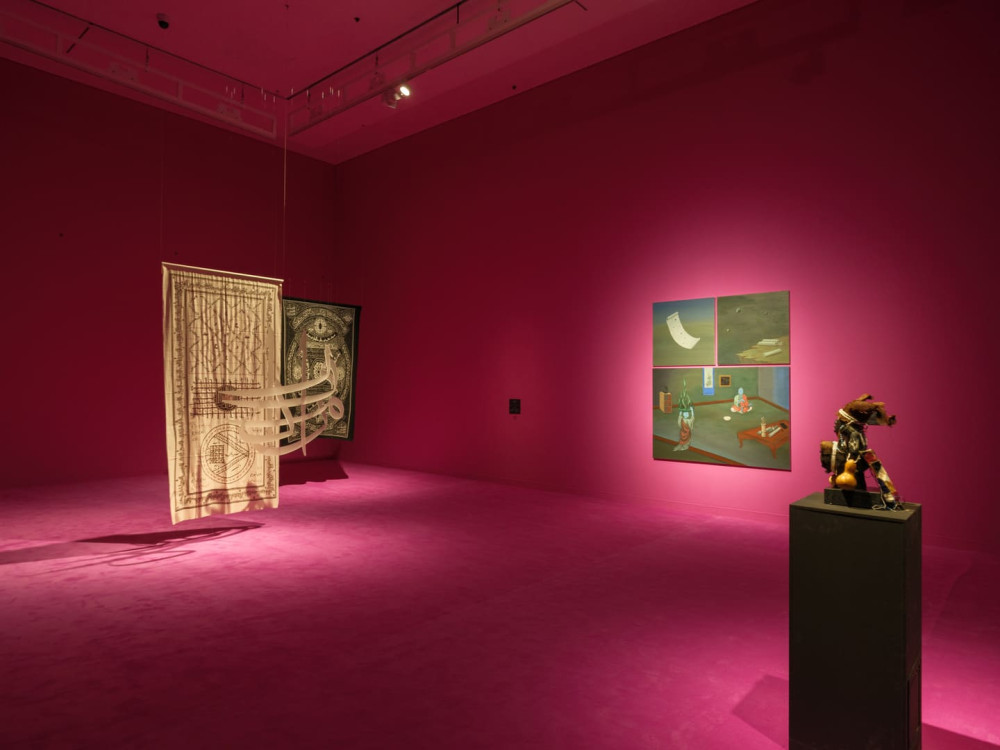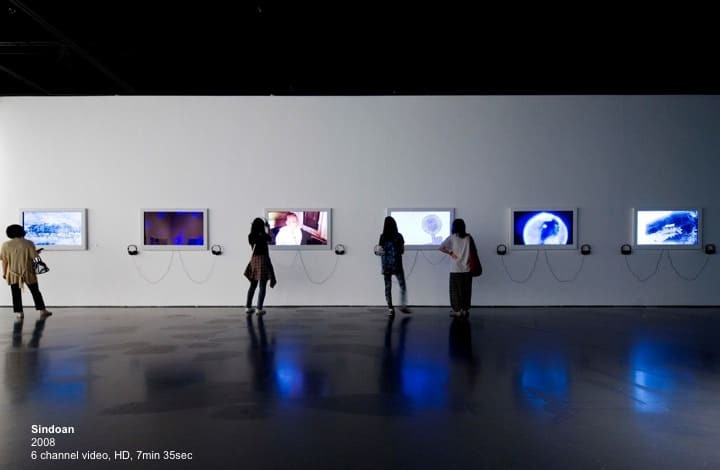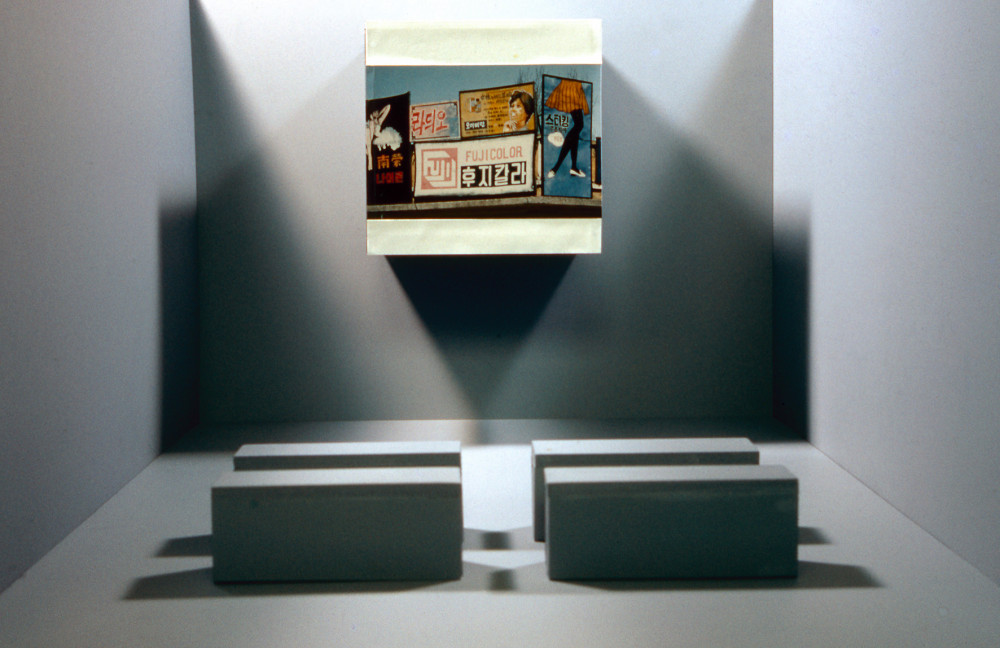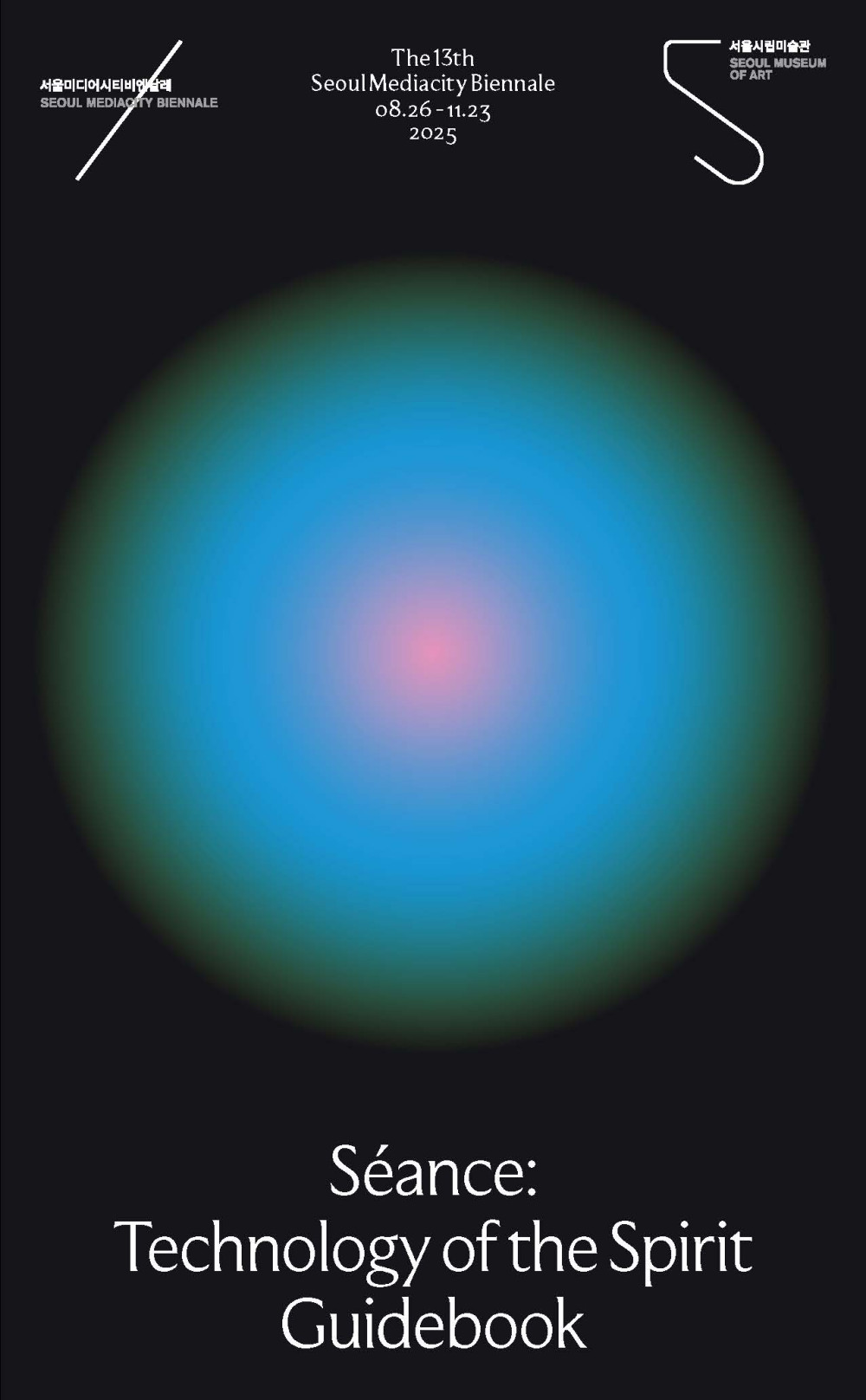
Park Chan-kyong’s work as a visual artist, film director, and writer explores the enduring influence of Buddhist and shamanistic beliefs on Korean society through decades of dizzying political and economic transformation.
This new series of paintings presents a tale from the thirteenth-century Samguk Yusa (Stories of the Three Kingdoms of Ancient Korea). Having travelled to China during the Tang Dynasty to study with Wuwei Sanzang, only for the great master to refuse to teach him, Monk Hyetong expressed his determination to learn Buddhism by carrying a flaming brazier on his head. This story is still often depicted on the exterior walls of Buddhist temples in Korea.
Park Chan-kyong’s own interpretation of the iconography of Monk Hyetong allows the artist to reflect on the universe, meaning, and death while enjoying the ineffable nature of these reflections. The supposed lack of refinement and “inaccuracy” (in such matters of perspective) of the painting on temple murals serves, he argues, to create a more playful and democratic space for the staging of Zen riddles.
